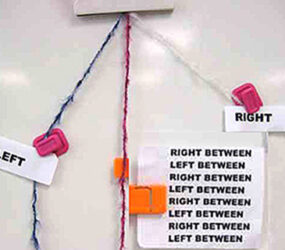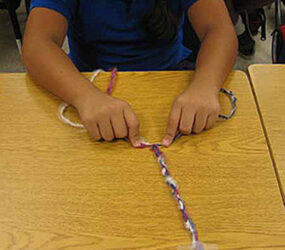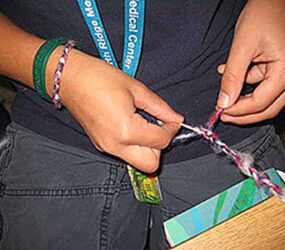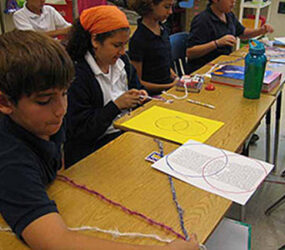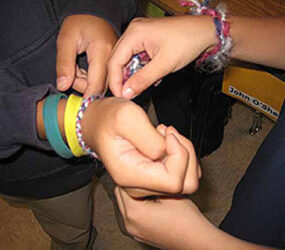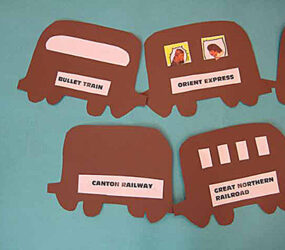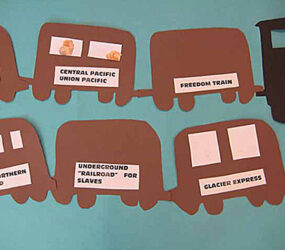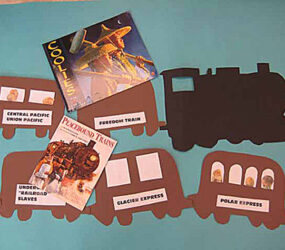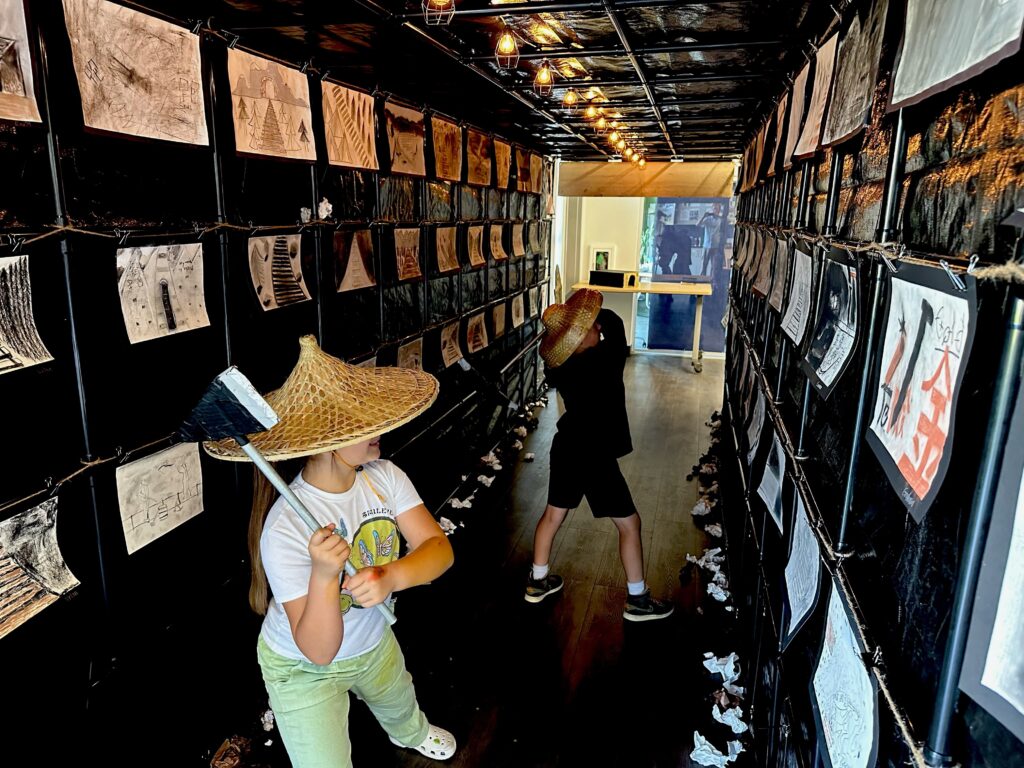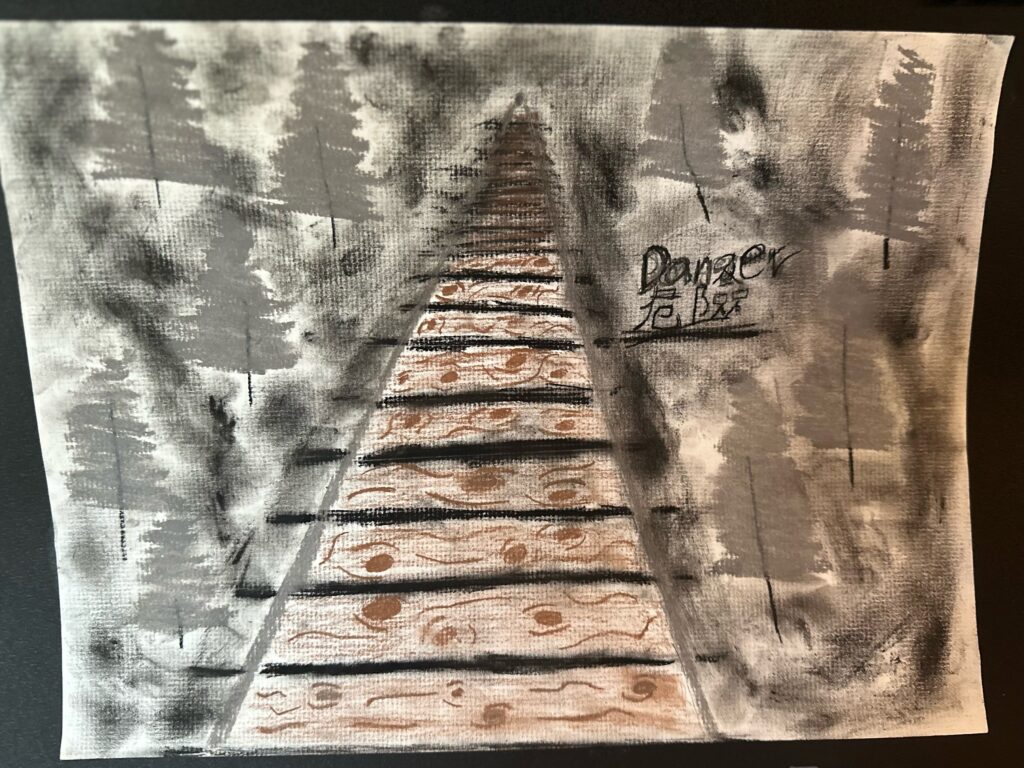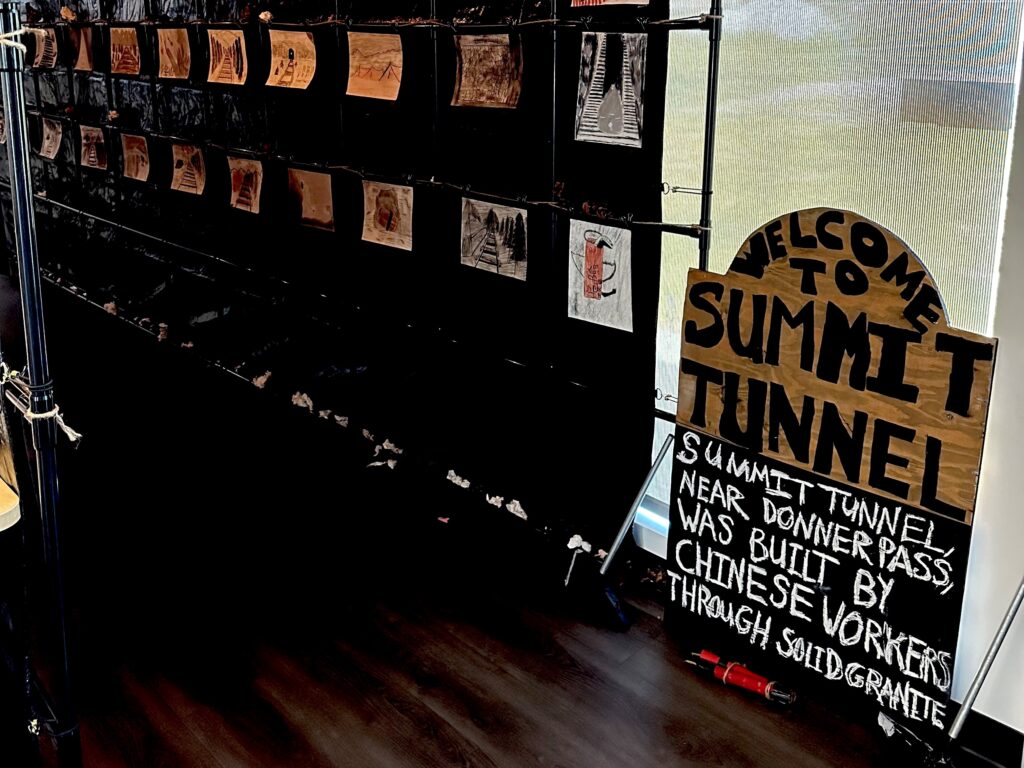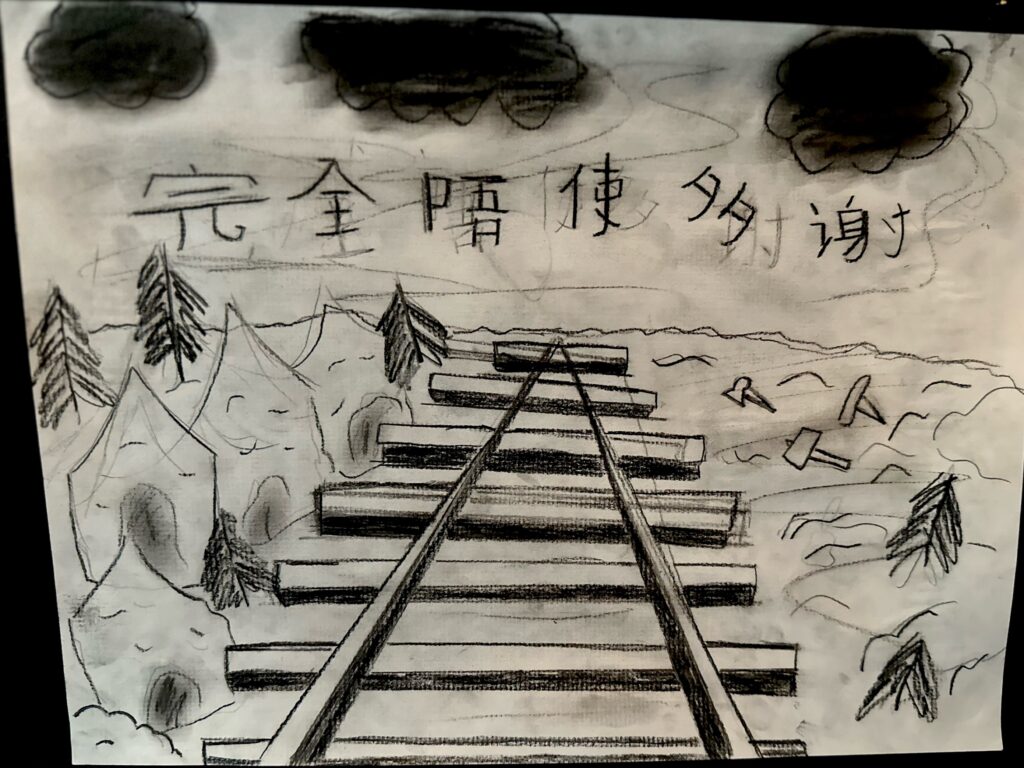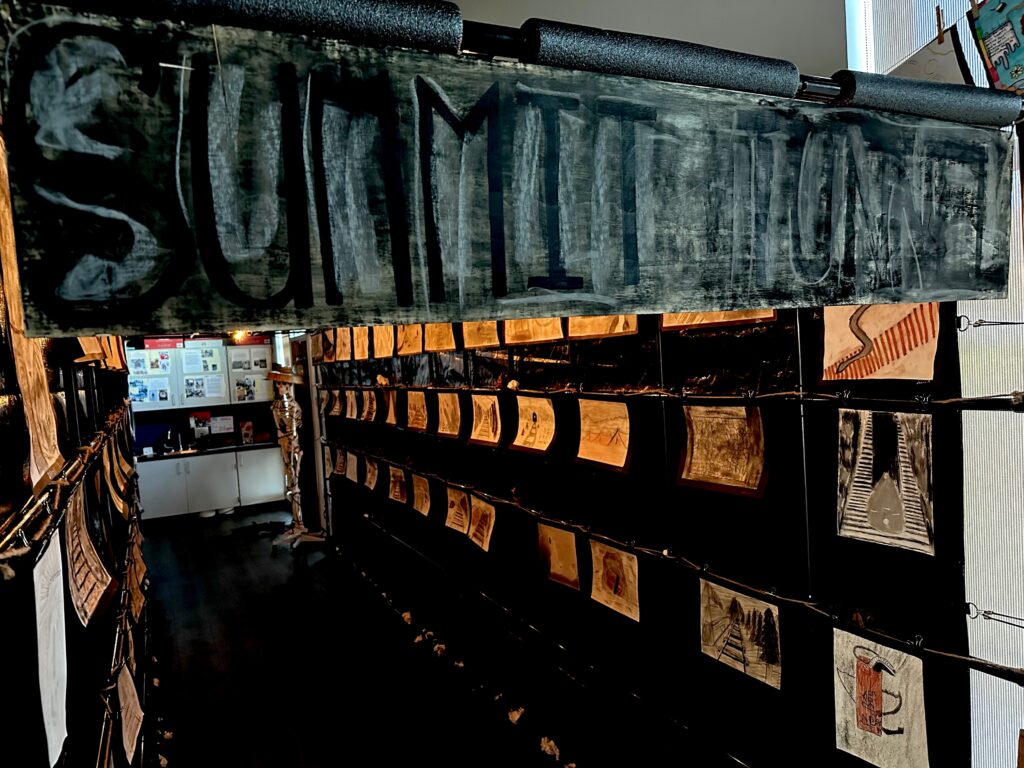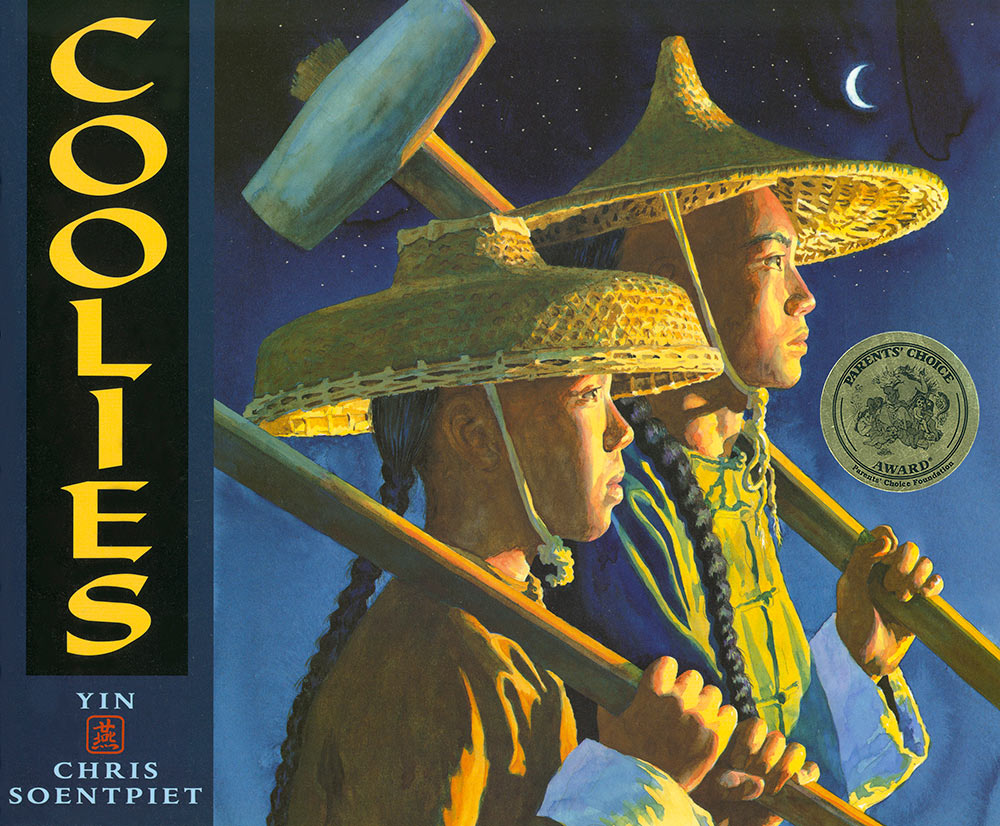
PROJECT A: COOLIES HATS
In the mid-19th century, when they were constructing the transcontinental railroad, Chinese laborers played a vital role. Despite facing derogatory labels like “coolies,” they stood out with their unique headgear. These hats, often referred to as “coolie hats” or “rice hats,” were crafted from straw and had a cone-shaped design, shielding them from the sun while allowing air to flow. The adoption of these hats became a symbol of the significant contribution made by Chinese laborers to the railroad’s construction. It’s truly remarkable how these hardworking individuals persisted through challenging conditions to help build such an iconic project!
- scissor
- long rope
- paper or styrofoam plate
- ruler
- glue
- straw (can be a drinking straw)
- stapler
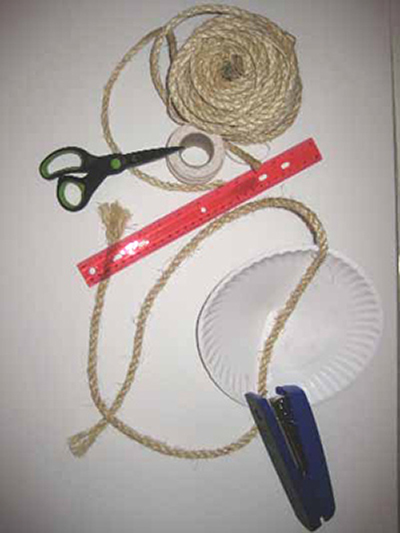

STEP 3
Cut the straws to the length of the hat’s radius.
Glue the straws to the hats.
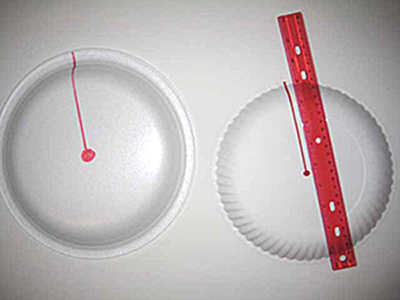

STEP 4
Braids can be made from black garbage bags, cloth, etc…

PROJECT B: COOLIES BRAIDS (QUEUE)
Students used red, white, and blue yarn, braided it, and made patriotic bracelets and belts to wear to remind everyone to vote.
PROJECT C: HISTORY TRAIN
PROJECT D: PROJECT BASED LEARNING
Inspired by the book COOLIES, using charcoal to replica the Summit Tunnel. This project-based activity merges historical learning with artistic expression, enhancing students’ understanding of the challenges and dangers faced by railroad workers. Credit: Teague Tubach and students

